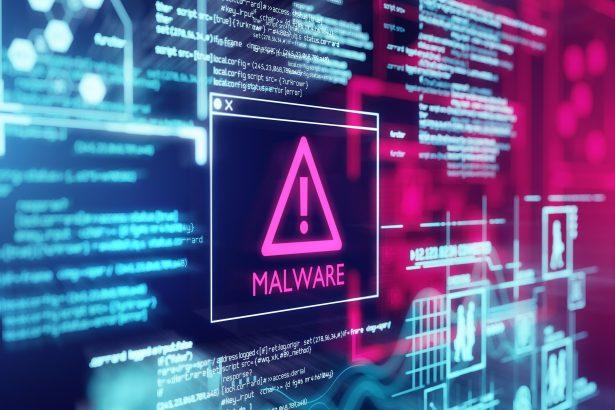Anubis is a dangerous and sophisticated malware program written in the Python programming language. It is classified as a backdoor — a type of Trojan that secretly opens access to compromised systems, allowing attackers to drop additional malware and execute commands without the user’s knowledge. Anubis has been active since at least 2025 and is linked to the notorious cybercriminal group FIN7, which has been operating since 2015 and is responsible for billions in damages globally.
Anubis Malware Threat Summary
| Attribute | Details |
|---|---|
| Name | Anubis Malware |
| Threat Type | Trojan, Backdoor |
| Associated Actors | FIN7 (active since 2015) |
| Detection Names | Combo Cleaner: Trojan.GenericKD.76020597 ESET-NOD32: Python/Agent.BHZ Ikarus: Trojan.Python.Multiverze Kaspersky: Trojan.Python.Agent.mf Lionic: Trojan.ZIP.Python.4!c |
| Symptoms | No overt symptoms; runs silently and stealthily |
| Distribution Methods | Malicious email attachments, fake software cracks, malicious ads, social engineering |
| Damage | Stolen credentials and banking info, identity theft, system compromise, botnet inclusion |
| Danger Level | ★★★★★ (Very High) |
What sets Anubis apart from many other malware strains is its advanced stealth and persistence features. It is multi-layered in design, uses complex obfuscation, and is armed with anti-analysis and anti-detection mechanisms. This makes it extremely difficult for traditional security tools to identify and remove.
Once inside a system, Anubis performs a range of harmful activities. It manipulates the Windows Registry to ensure persistence and silently collects system information. Moreover, it can execute shell commands, browse through and manipulate files, download or upload additional payloads, track IP addresses, and more. These abilities enable it to act as a launchpad for even more serious infections, such as ransomware, spyware, cryptocurrency miners, and other Trojans.
Anubis doesn’t need flashy payloads to cause serious damage. Its quiet infiltration and continuous monitoring of system processes make it a potent threat. Victims may not notice anything unusual at first — no error messages, crashes, or obvious performance degradation. Yet, in the background, sensitive data like login credentials and banking details could be siphoned off and sold on the dark web.
One of the scariest features of Anubis is its modular nature. While the current version is already dangerous, future variants could include new payloads and even smarter evasion techniques. The malware landscape is constantly evolving, and Anubis is a prime example of a threat designed to adapt and survive.
The connection to the FIN7 group only underscores its risk level. FIN7 has been behind some of the most complex and damaging cyberattacks of the past decade. The fact that Anubis is believed to be part of their toolkit should be a wake-up call for businesses and individual users alike.
Manual Removal of Backdoor Malware
(Note: Manual removal can be complex and risky. If performed incorrectly, it may cause system instability. Proceed with caution or use the automated SpyHunter method below.)
Step 1: Restart in Safe Mode with Networking
To prevent the backdoor malware from running, restart your computer in Safe Mode with Networking:
- Press Windows + R, type
msconfig, and press Enter. - Navigate to the Boot tab.
- Check Safe boot and select Network.
- Click Apply > OK and restart your PC.
Step 2: Terminate Malicious Processes in Task Manager
- Press Ctrl + Shift + Esc to open Task Manager.
- Look for suspicious processes that may be linked to the backdoor malware. Common signs include:
- Unrecognized processes consuming high CPU or memory.
- Randomly named processes (e.g.,
svchost32.exe,systemupdate.exe).
- Right-click on any suspicious process and select End Task.
Step 3: Delete Suspicious Files from System Folders
- Press Windows + R, type
%AppData%and press Enter. - Check for suspicious folders and files, such as unknown
.exeor.dllfiles. - Navigate to the following locations and remove suspicious files:
C:\Users\YourUserName\AppData\LocalC:\Users\YourUserName\AppData\RoamingC:\ProgramDataC:\Windows\System32\driversC:\Windows\Temp
Step 4: Remove Malicious Entries from the Windows Registry
- Press Windows + R, type
regedit, and hit Enter. - Navigate to the following keys:
HKEY_LOCAL_MACHINE\SOFTWARE\Microsoft\Windows\CurrentVersion\RunHKEY_CURRENT_USER\Software\Microsoft\Windows\CurrentVersion\Run
- Look for entries with random names or unknown applications.
- Right-click and select Delete.
(Caution: Editing the Registry incorrectly can cause serious issues. Back up your registry before making changes.)
Step 5: Reset Browser Settings
Backdoor malware may modify browser settings to redirect traffic or steal credentials. Reset your browsers:
Google Chrome
- Open Chrome, type
chrome://settings/resetin the address bar, and press Enter. - Click Restore settings to their original defaults > Reset settings.
Mozilla Firefox
- Open Firefox, type
about:supportin the address bar, and press Enter. - Click Refresh Firefox > Confirm.
Microsoft Edge
- Open Edge, go to Settings > Reset Settings.
- Click Restore settings to their default values > Reset.
Step 6: Scan for Remaining Threats
After manual removal, use Windows Defender or a third-party antivirus to scan your system for remaining threats.
- Press Windows + I > Update & Security > Windows Security.
- Click Virus & threat protection > Quick Scan.
Remove Backdoor Malware with SpyHunter (Recommended)
SpyHunter is a powerful anti-malware tool that can detect and remove backdoor malware without requiring technical expertise.
Step 1: Download SpyHunter
- Go to the official SpyHunter download page: Download SpyHunter
- Click the Download Now button.
Step 2: Install SpyHunter
- Locate the downloaded
SpyHunter-Installer.exefile and double-click it. - Follow the on-screen instructions to complete the installation.
- Launch SpyHunter after installation.
Step 3: Perform a Full System Scan
- Click Start Scan Now.
- SpyHunter will scan your system for backdoor malware and other threats.
- Once the scan is complete, review the detected threats.
Step 4: Remove Detected Malware
- Click Fix Threats to remove all detected malware.
- If prompted, restart your computer to complete the removal process.
Step 5: Enable SpyHunter's Real-Time Protection
To prevent future infections:
- Open SpyHunter and go to Settings.
- Enable Real-Time Malware Protection.
- Keep SpyHunter updated to stay protected against the latest threats.
How to Prevent Backdoor Malware Infections
- To keep your system safe, follow these security best practices:
- Avoid downloading cracked software – Many backdoors hide in illegal downloads.
- Keep Windows and software updated – Install security patches regularly.
- Use strong passwords – Prevent unauthorized remote access.
- Enable two-factor authentication (2FA) – Adds an extra security layer.
- Scan email attachments before opening – Phishing emails often carry malware.
- Use a firewall – Block unauthorized network connections.
Conclusion
Anubis is a stealthy and dangerous backdoor Trojan with capabilities far beyond basic malware. Its Python-based framework, anti-analysis defenses, and ability to execute remote commands make it a severe threat to infected systems. While symptoms may be invisible to users, the consequences can be catastrophic: stolen data, financial loss, and long-term privacy compromise. Understanding the nature of this malware is critical to recognizing the risk it poses — and preparing to defend against it.




